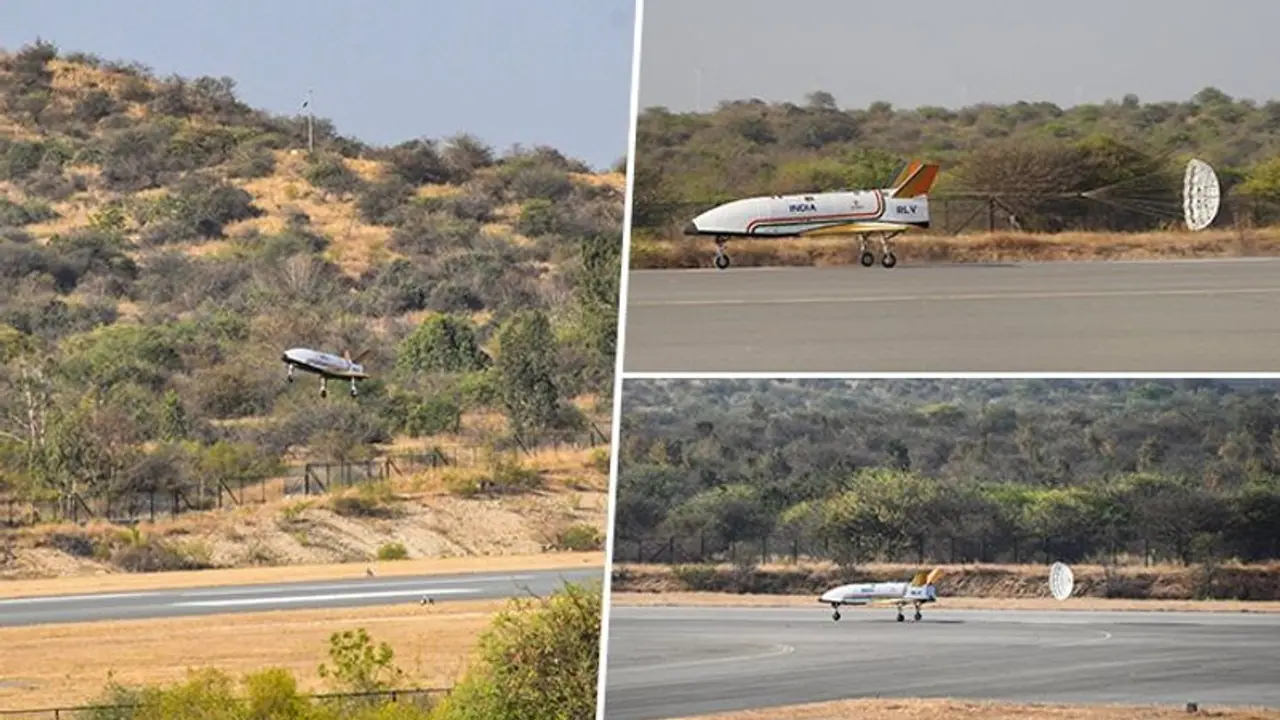According to the space agency, the RLV took off at 7:10 am on Sunday by a Chinook Helicopter of the IAF as an underslung load and flew to a height of 4.5km. ISRO conducted the experiment in collaboration with the Air Force and Defence Space Research Organisation.
The Reusable Launch Vehicle Autonomous Landing Mission (RLV LEX) was successfully finished on Sunday by the Indian Space Research Organization (ISRO). According to the national space agency, the test was carried out at the Aeronautical Test Range (ATR) in Chitradurga, Karnataka. Together with the Air Force and the Defence Space Research Organization, ISRO carried out the exercise.

ISRO took to Twitter over the successful conduct of the landing mission and said “India achieved it!"
ISRO successfully conducted the Reusable Launch Vehicle Autonomous Landing Mission (RLV LEX). On April 2, 2023, early in the morning, the test was carried out at the Aeronautical Test Range (ATR), Chitradurga, Karnataka.
Also Read | Who is Amit Kshatriya, an Indian-American engineer to head NASA's 'Moon to Mars' programme?
A Chinook Helicopter of the Indian Air Force launched the RLV at 7:10 am as a "underslung load," according to an ISRO news statement, and it climbed to a height of 4.5 km. (above MSL).
“Once the predetermined pillbox parameters were attained, based on the RLV’s Mission Management Computer command, the RLV was released in mid-air, at a down range of 4.6 km," the press release said.
This operation is also notable for being the first in which a winged body has been lifted by a chopper to a height of 4.5 km and then allowed to perform an autonomous touchdown on a runway.
In essence, the RLV is a "space plane with a low lift to drag ratio, necessitating an approach at high glide angles and requiring a landing at high velocities of 350 kmph," according to ISRO. The landing attempt used a number of homegrown systems, according to ISRO, which also noted that it created localised guidance systems based on instrumentation, sensing systems, and pseudolite systems.
Also Read | NASA, SpaceX launches Crew-6 with US, Arab and Russian astronauts to space
